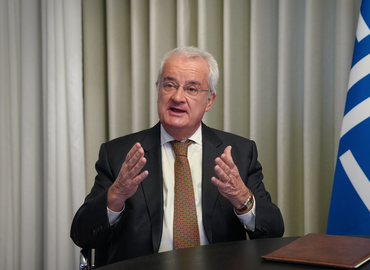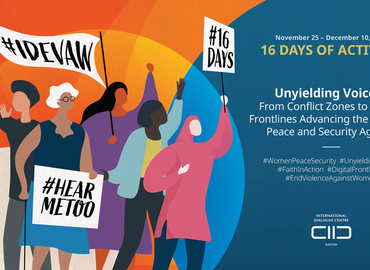Overcoming the Digital Divide: Dialogue in the Age of COVID-19
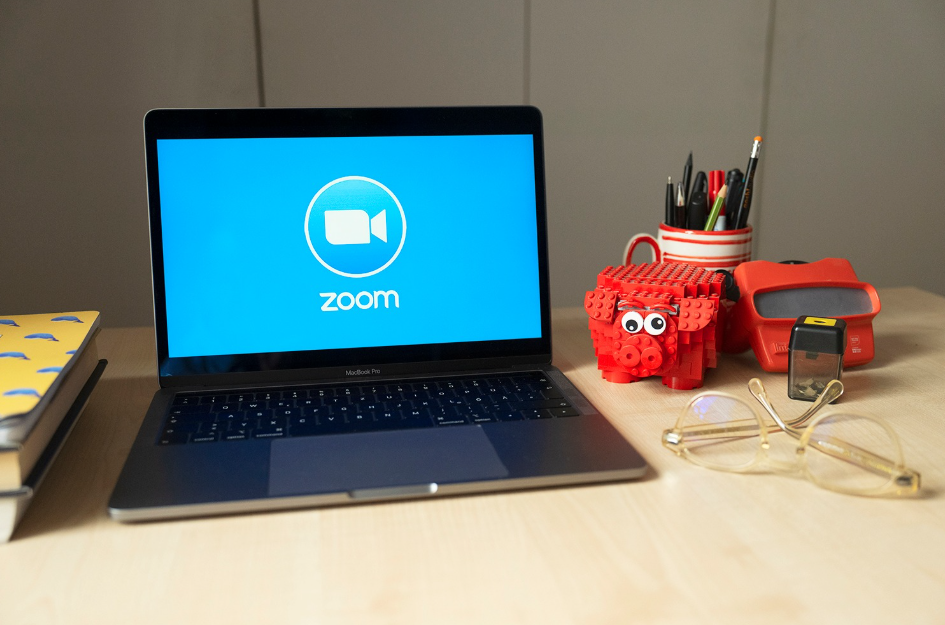
As participants file into the room, they each take their respective spots around the table. Settling in, they keep their microphones muted until the facilitator is ready to begin the dialogue session. Each is ready to listen, to learn, to connect across geographic, religious, and social differences.
This time around, however, there is one more divide to overcome between them — a digital one.
Because of the COVID-19 pandemic, businesses, individuals, and organizations around the world are reimagining how in-person experiences can be transferred online. Tour operators are offering “virtual vacations,” universities and schools are moving courses online, and “digital dating” is becoming an alternative to in-person meet-ups.
The crisis has also precipitated a shift in approaches to intercultural and interreligious dialogue.
While there are challenges in the change, KAICIID partners and seasoned dialogue practitioners are finding inventive ways to not only transfer dialogue online, but make it effective in the process.
Drawing on their wealth of experience, they are using digital tools in intentional ways. While it may seem surprising, they are finding online dialogue can foster transformative relationships across differences.
Establishing trust and safety online
Academic research on the potential of the Internet to foster interreligious understanding is a mixed bag, often reporting “ambivalent or even contradictory findings,” wrote Dr. Anna Neumaier, a research fellow at the Center for Religious Studies at Ruhr-University Bochum.
Dr. Mohammed Abu-Nimer, KAICIID Senior Adviser and expert on conflict resolution and dialogue for peacebuilding, said he felt this ambiguity in shifting previously face-to-face interactions online in recent months.
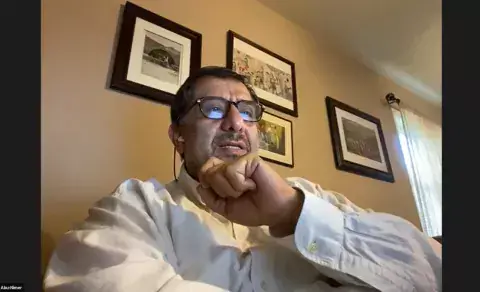
“Building trust and establishing safety are core ingredients in any relationship,” said Abu-Nimer, “but especially between people who are from different cultures, languages, backgrounds, and religions.”
Abu-Nimer explained that due to lack of mobility and social distancing restrictions, the pandemic “has struck at the heart of these core ingredients.”
The main challenge, he said, has been to modify offline practices to make them successful online.
He identified a few key challenges for organizations wanting to foster dialogue online. The first major obstacle, he said, “is people can hide behind their screens or their mics, shutting off their camera or muting their voice.”
This prevents deep connection and impedes the importance of vulnerability and sensitivity to others’ non-verbal cues and physical presence.
Other challenges he mentioned include the tendency for online dialogue to be more cognitive than affective, that virtual dialogue can be perceived as disconnected from the “real world,” and that participants cannot share in offline rituals or impromptu encounters and experiences.
Adapting to the virtual sphere
A canon lawyer helping Catholic religious orders of women develop new policies on the protection of minors and vulnerable adults, KAICIID Fellow Claudia Giampietro has experienced this first-hand.
Reflecting on what she called “in-presence sessions” she had with 30 Catholic religious women coming from Asia, Africa and Eastern Europe in Rome last year, Giampietro said that interactions through dance, shared celebrations, and food were “incredibly enriching” and “help bridge divides.”
Online dialogue can feel like a poor substitute for such encounters.
Thus, Giampietro has found the process frustrating at times. Additional impediments to deep listening in virtual dialogue sessions include unstable Internet connection, family members or roommates in our visual or auditory fields, or the presence of other distractions, she said.
Even so, Giampietro has found ways to adapt and make online dialogue effective. “By adapting the pace to a different reality – the virtual sphere – and balancing the time to ensure everyone’s participation,” she said, “the results are positive and there are tangible signs of commitment from the group.”
Creating true digital dialogue

Immediately as social distancing measures came into effect, KAICIID Special Advisor, Patrice Brodeur was facilitating dialogue for the World Organization of the Scout Movement (WOSM) in a way that comes as close as possible to dialogues offline.
Brodeur said that while “there are some important differences between in-person and online,” he believes that “it is possible to have a virtual encounter that can be a true dialogue.”
But, he added, there are a few conditions for that to happen, some affective and others technical. On the one hand, Brodeur said facilitators should familiarise themselves with the technologies on offer and the best practices for digital communication. On the other hand, learning how to effectively build relationships of trust and cultivate postures of compassion must be learned through experience.
For examples of how to make online dialogue more functional and fruitful, Brodeur pointed to organizations which have been successful pioneers in the realm of online dialogue, especially the New York based non-profit, Soliya.
Soliya started in 2003 — before Skype or social media were even available — with the premise that digital tools could help create real connections between young people across the globe. Since then, they have been using interactive technologies to offer online dialogue and intercultural education opportunities — what they call “virtual exchange.”
What Waidehi Gokhale, CEO, said started in the equivalent of “dodgy chat rooms” was soon revamped into a purpose built technological ecosystem that could be as experiential and visceral as possible.
“Our Exchange Portal was custom built with dialogue in mind,” said Gokhale. It was also constructed to accommodate a range of bandwidth capabilities and to protect the safety and privacy of all those involved. The Exchange Portal is also designed to be a round table of video screens with a chat box in the middle, rather than a gallery like in Zoom or other digital communication platforms. They also use a “talking stick” methodology, so there is no open-mic format.
“All of this helps create intimacy, commitment, and safety between the participants,” said Gokhale.
Working with neuroscientists from MIT, Soliya measured their results over the years and know that their digitally-driven “virtual exchange” works. Now, as the world turns to digital tools to help facilitate dialogue in a time of social distancing, individuals and organizations have been reaching out to Soliya for guidance.
“It’s a lot easier to explain what we do now,” said Gokhale. “People used to be skeptical of our work in the past, but now they see the importance and the viability of virtual exchange as a set of important, tangible skills at a time when dialogue and collaboration are clearly the way forward.”
Recognising online exchange takes time
While online dialogue can present challenges to ensuring safety, security, and comfort, Gokhale knows it offers wide geographic reach, opportunities to explore curiosity more courageously, a safe place to practice real world skills, and learning that is “stickier” over the long term.
To help others, Gokhale shared a few suggestions.
“First, you need to slow everything down and understand that exchange online takes more time, then you need a trained facilitator to help foster group ownership, name dynamics of power openly and early on to help create a sense of safety and mutual commitment from the beginning,” she said.
Above all, Gokhale said, no matter if the exchange is offline or on, on Zoom or Microsoft Teams, participants still need to be willing to wade into conversations and decisions with empathy.
Brodeur echoed Gokhale’s emphasis on facilitation and recommended a “back facilitator” to help take care of technical details while the “front facilitator” moderated the conversation.
All of these efforts take time, each of the experts agreed.
Abu-Nimer urged patience, saying that efforts at making everything as interactive as possible helps create the trust and safety that are essential to effective dialogue.
“If it takes time to build these offline, you have to work even harder and be even more creative to recreate it online,” said Abu-Nimer.
But, he said, “it can be done.”
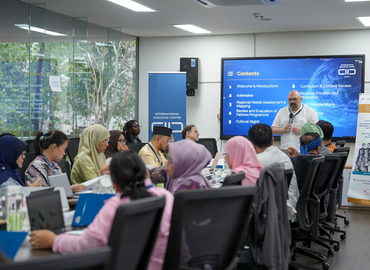
Ten years ago, the KAICIID International Fellows Programme began with a simple goal: to…

